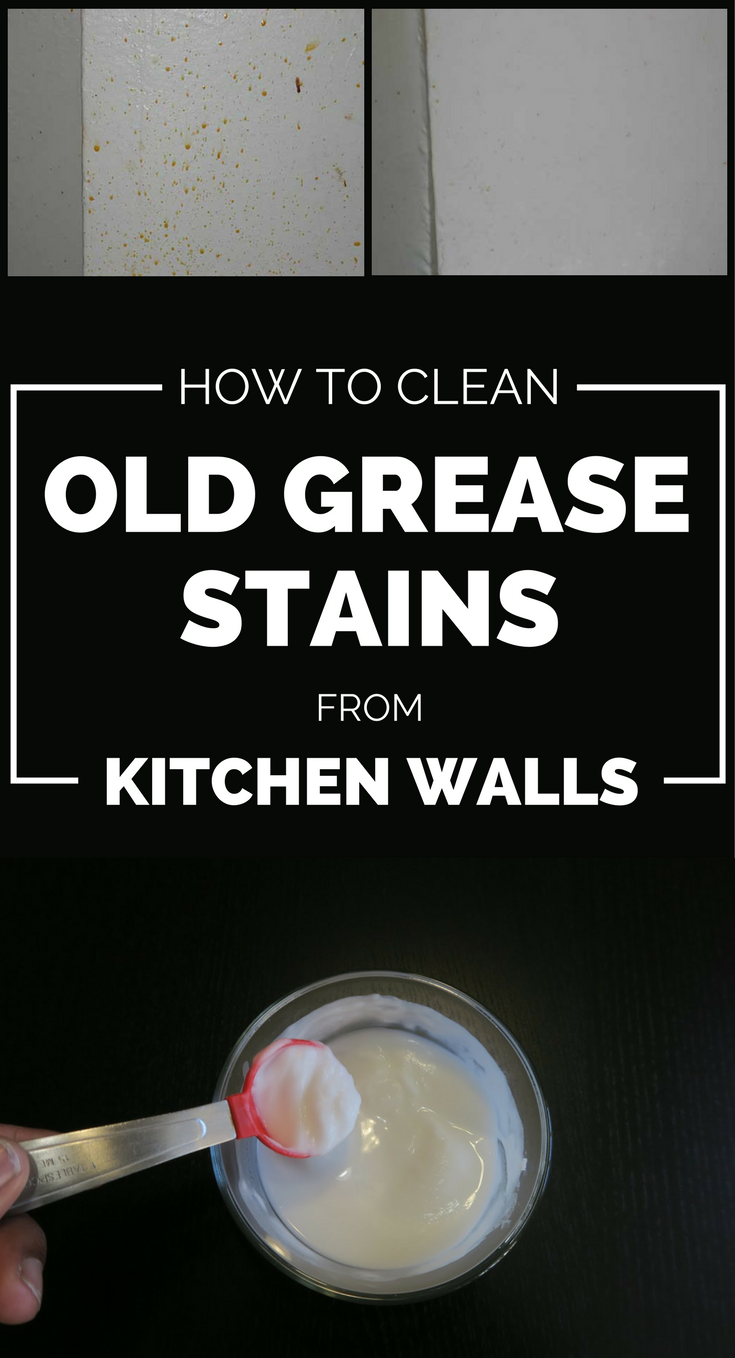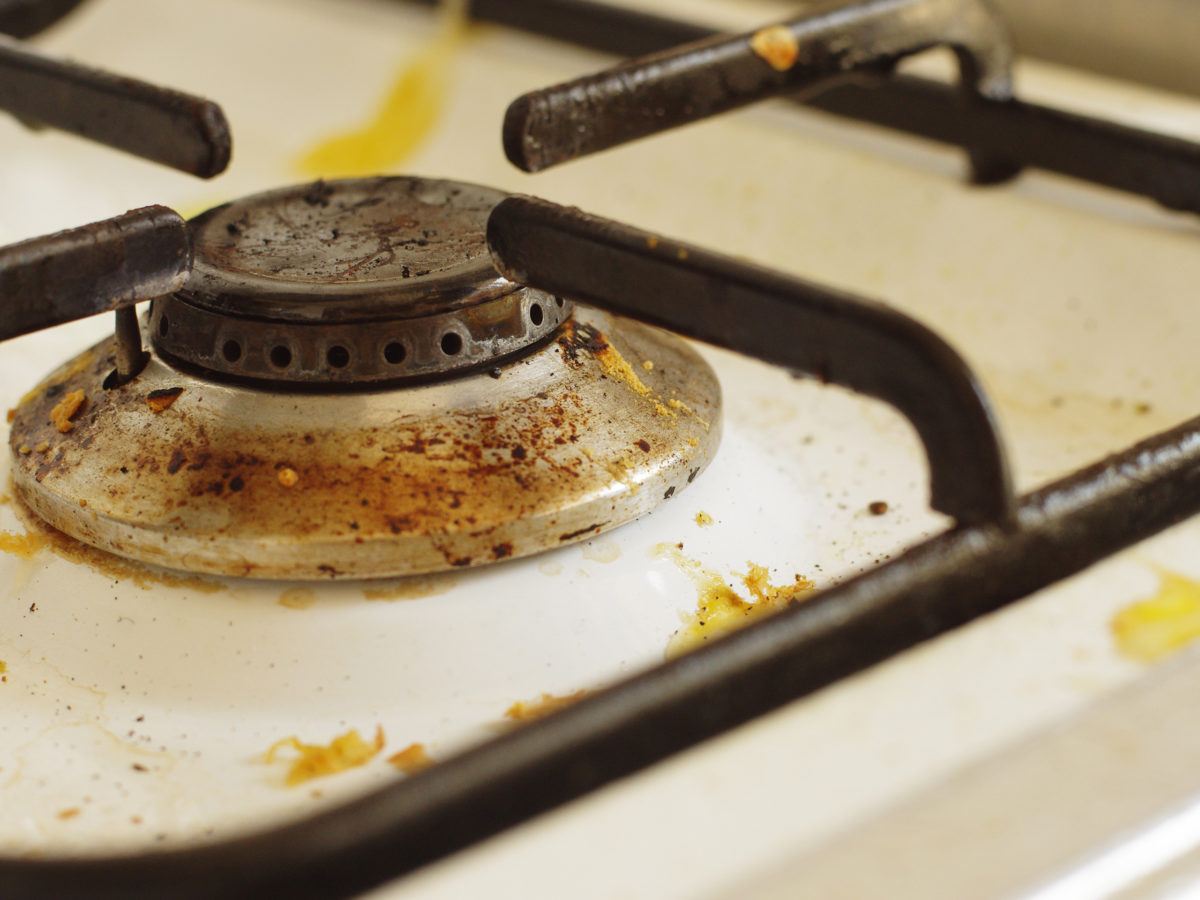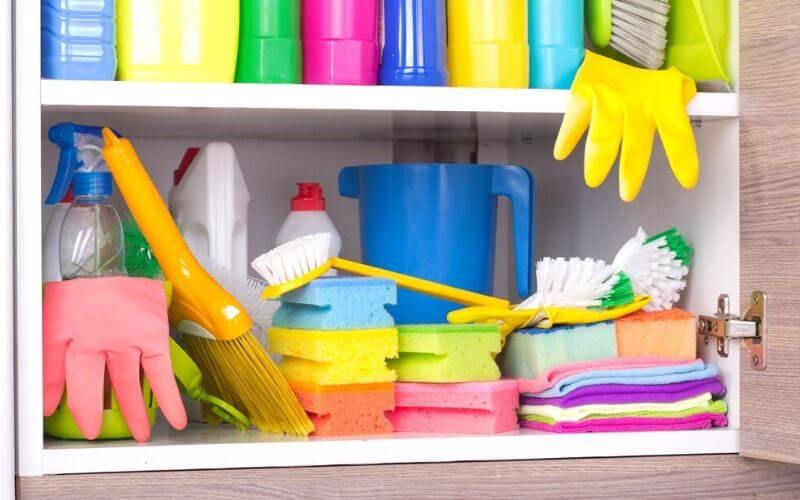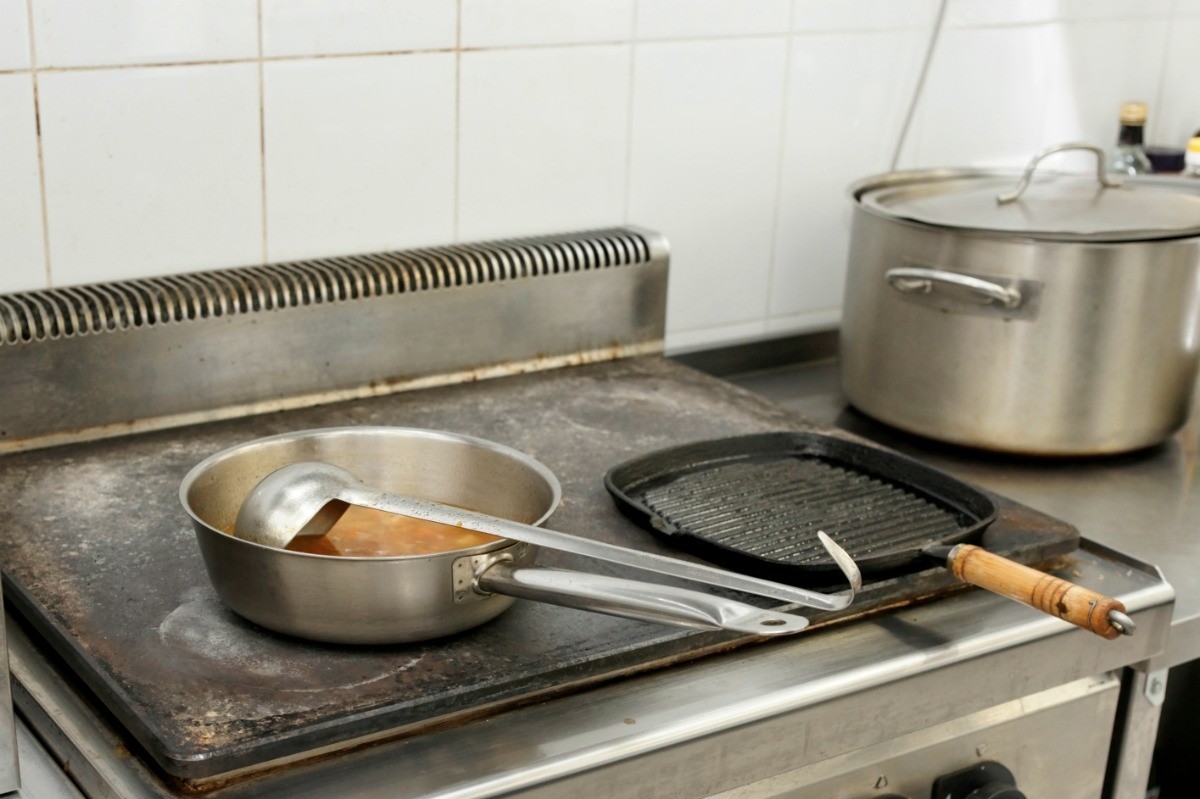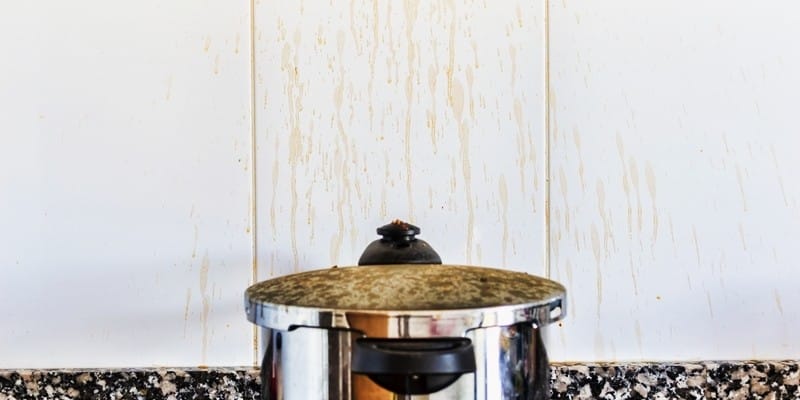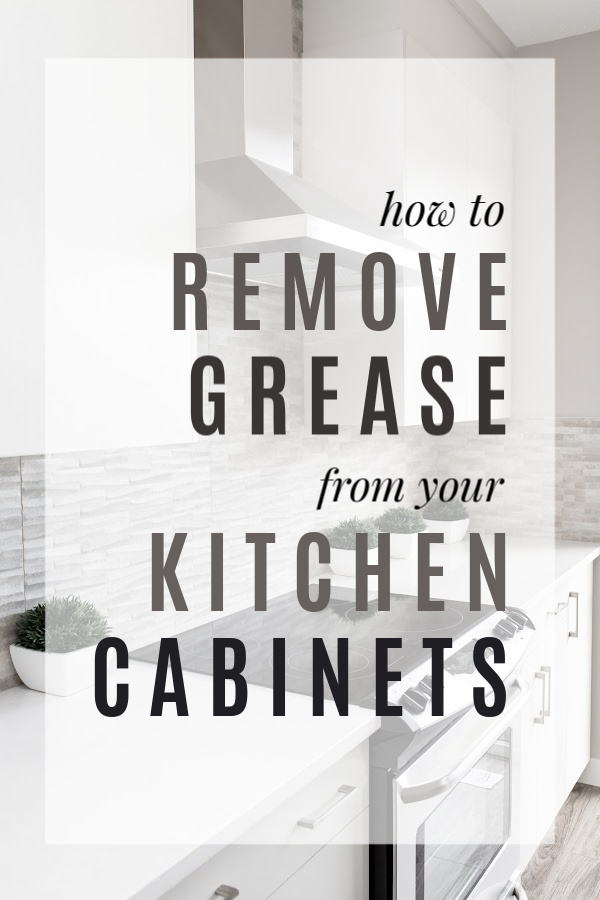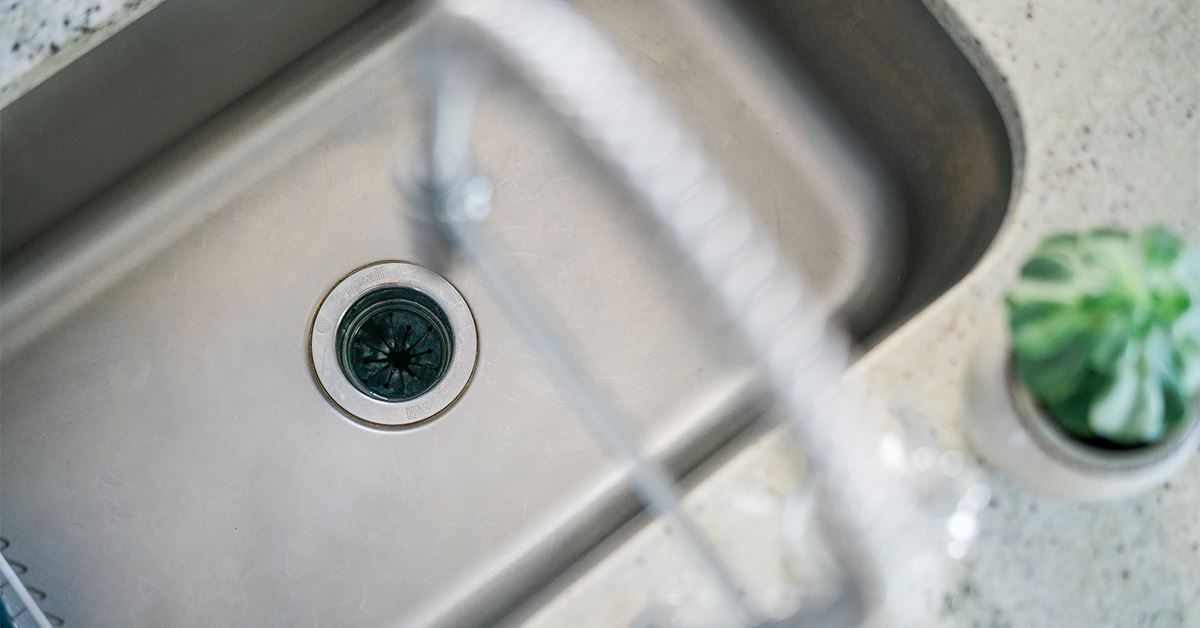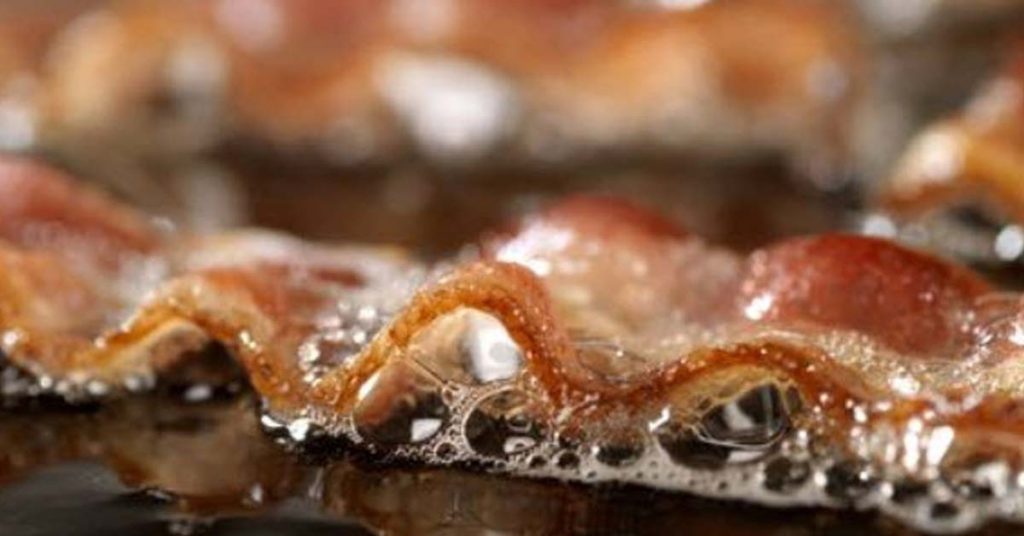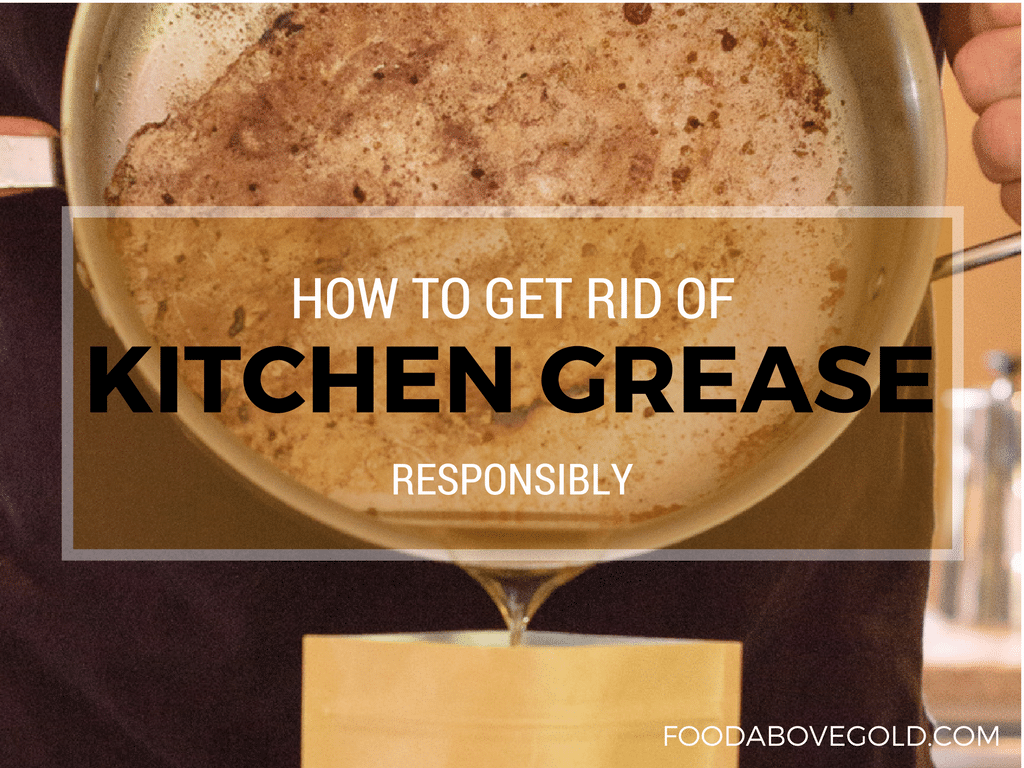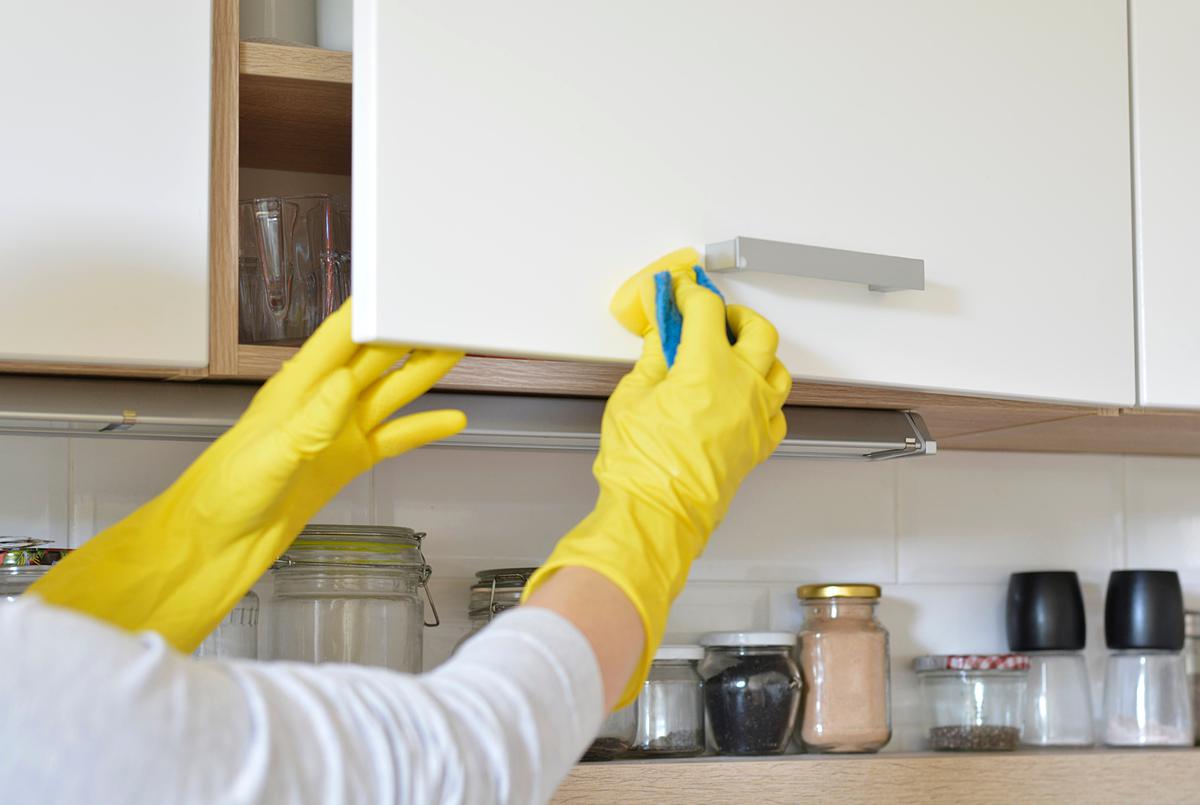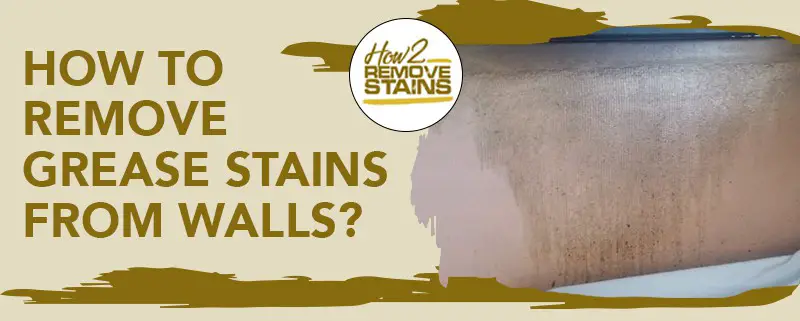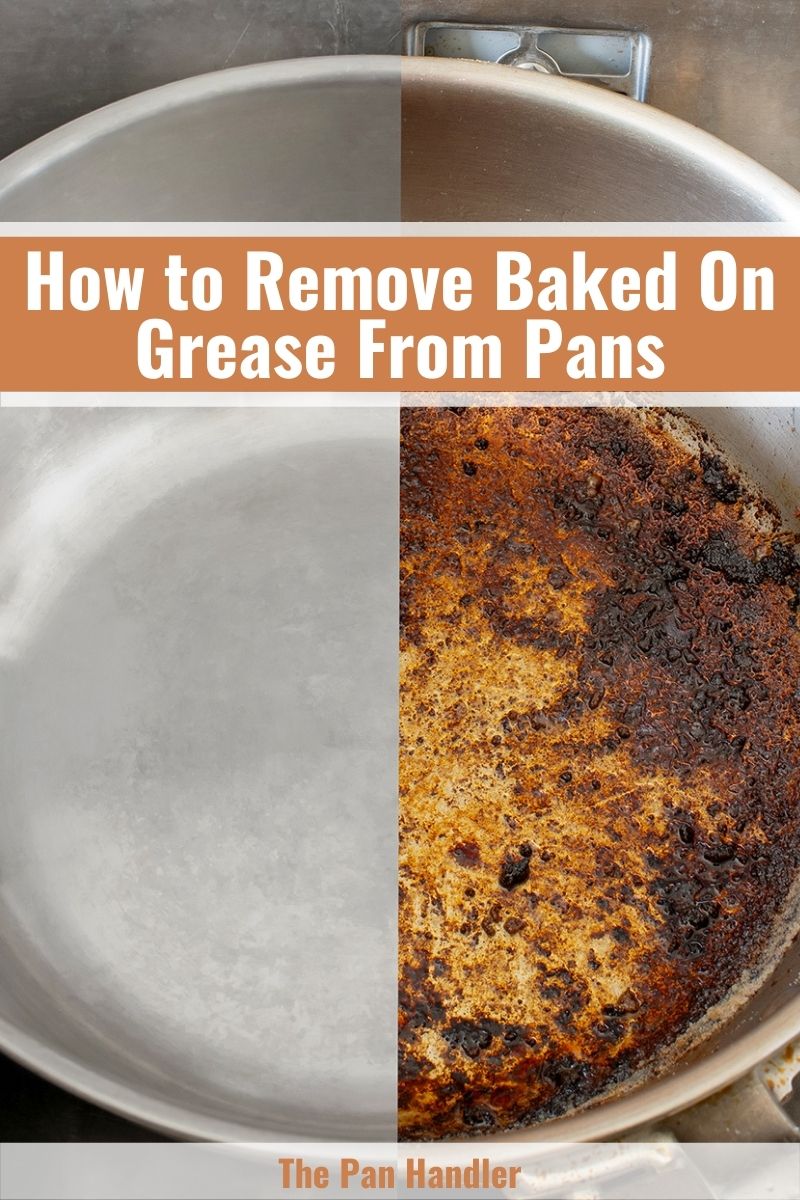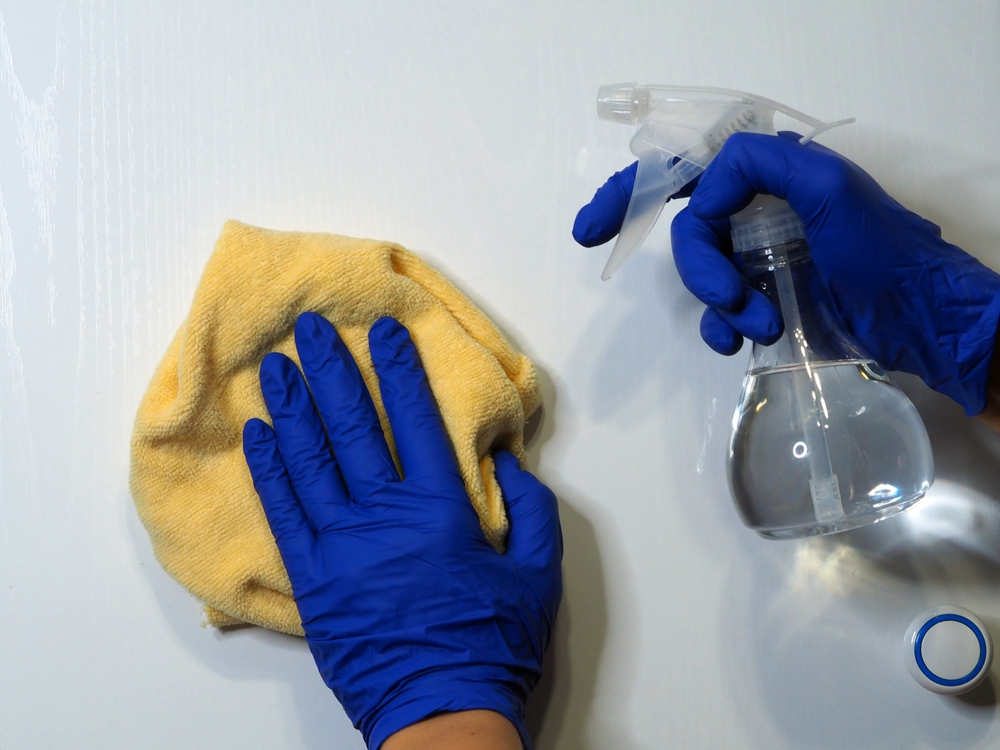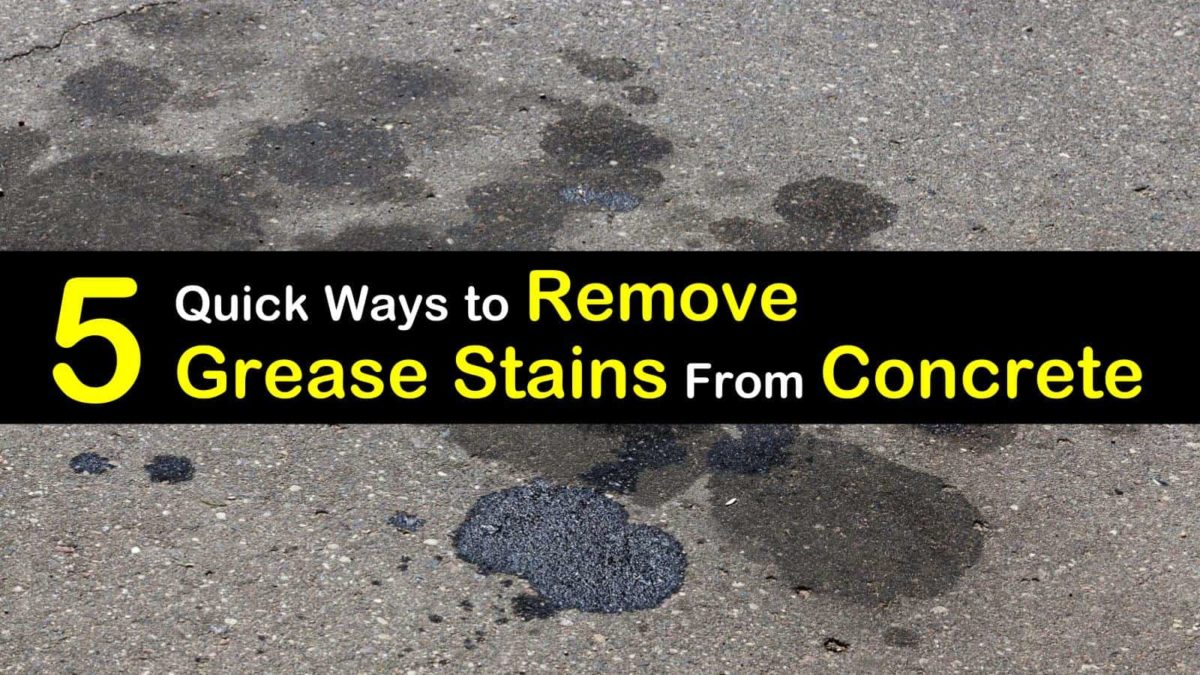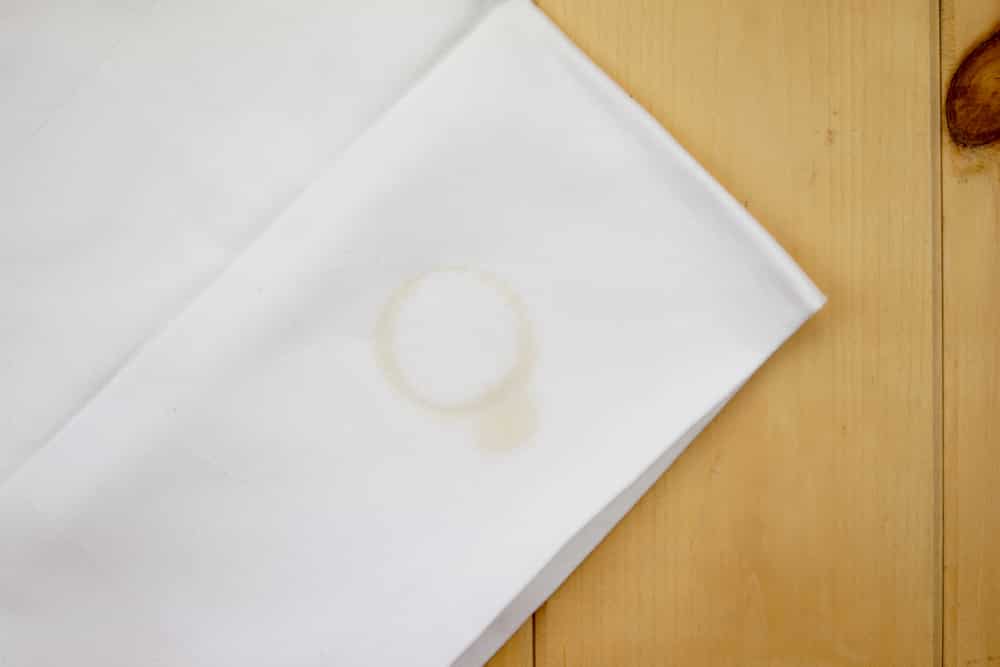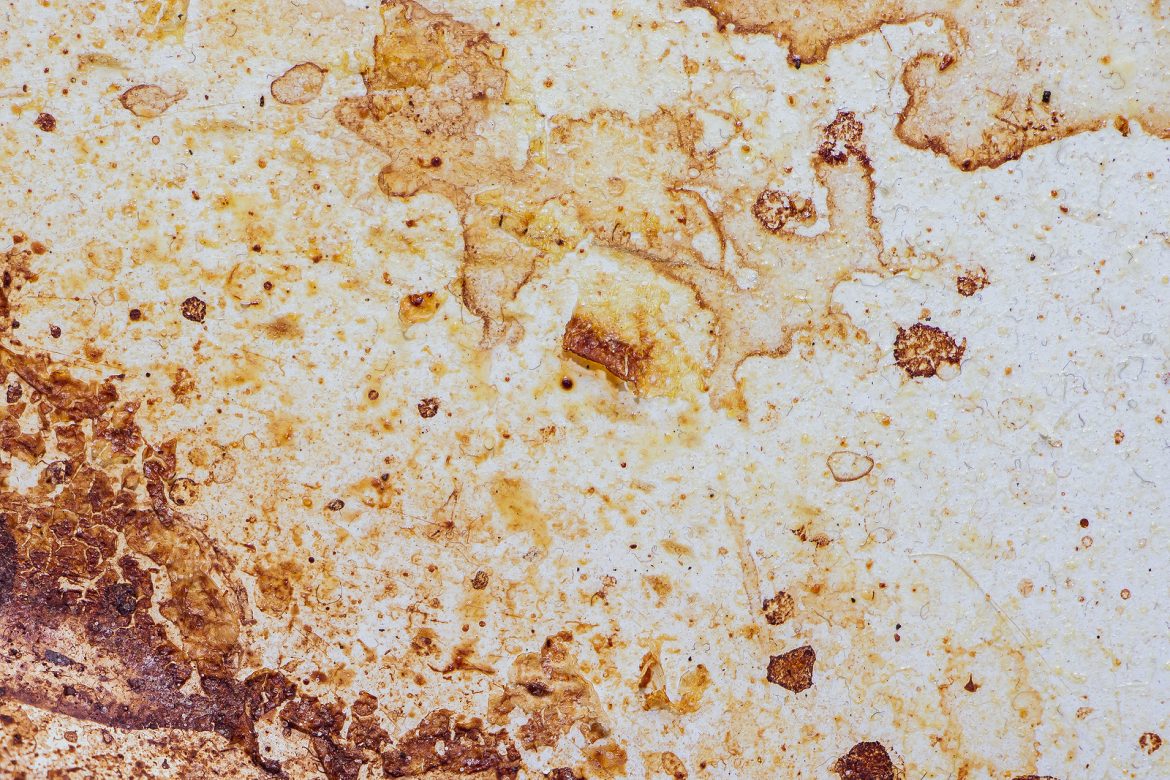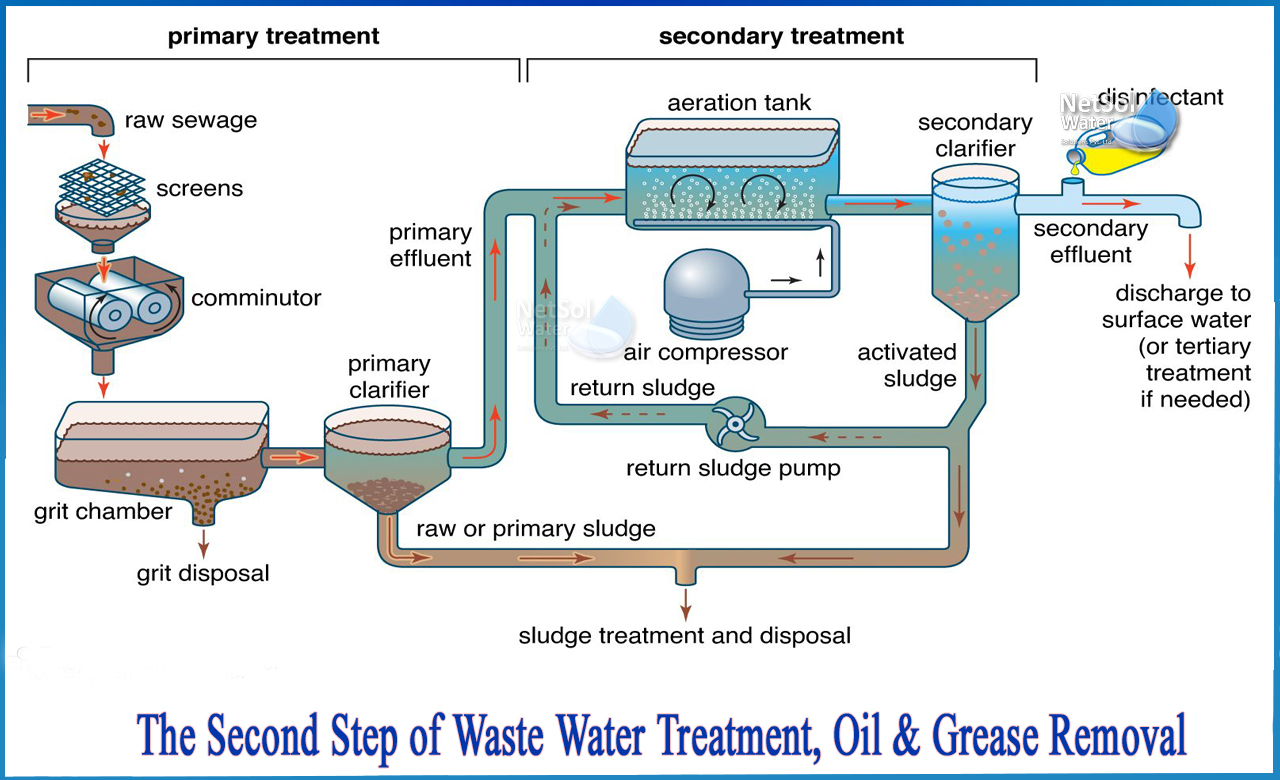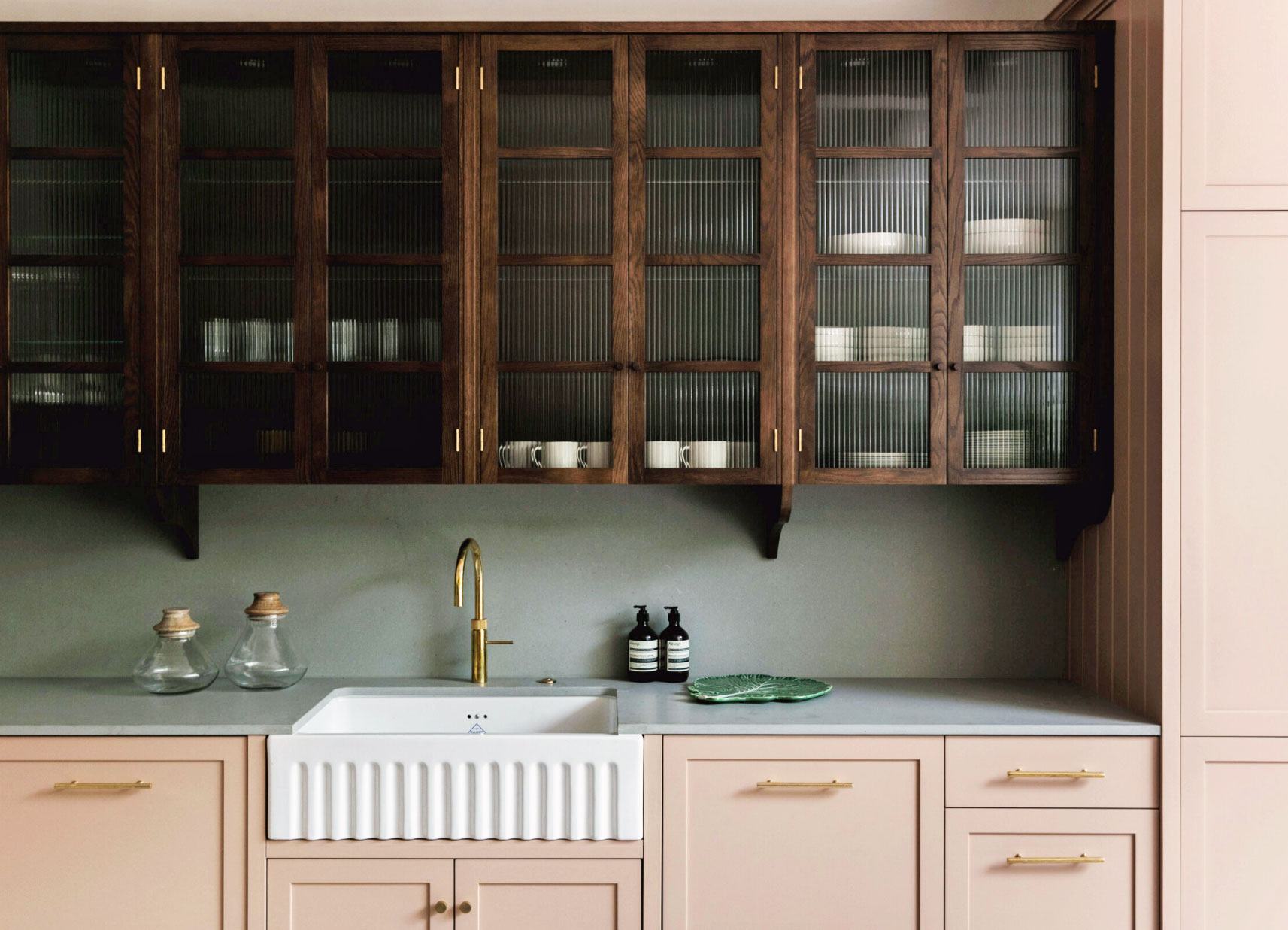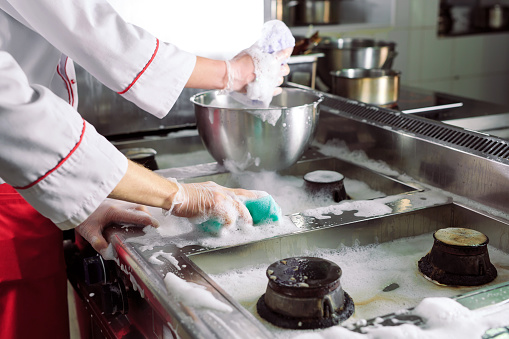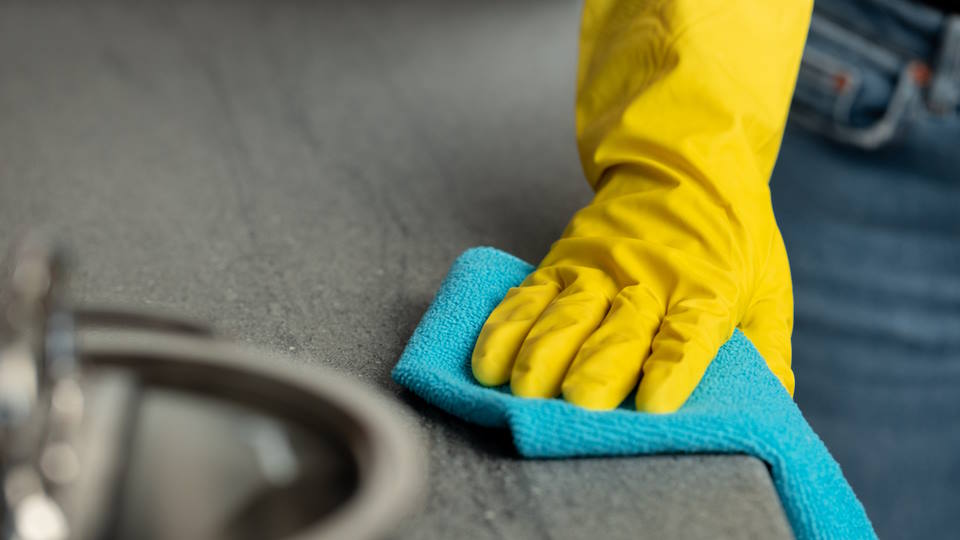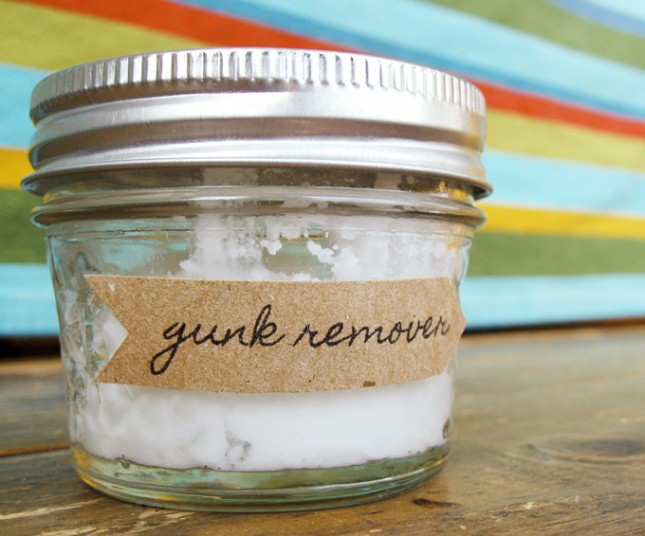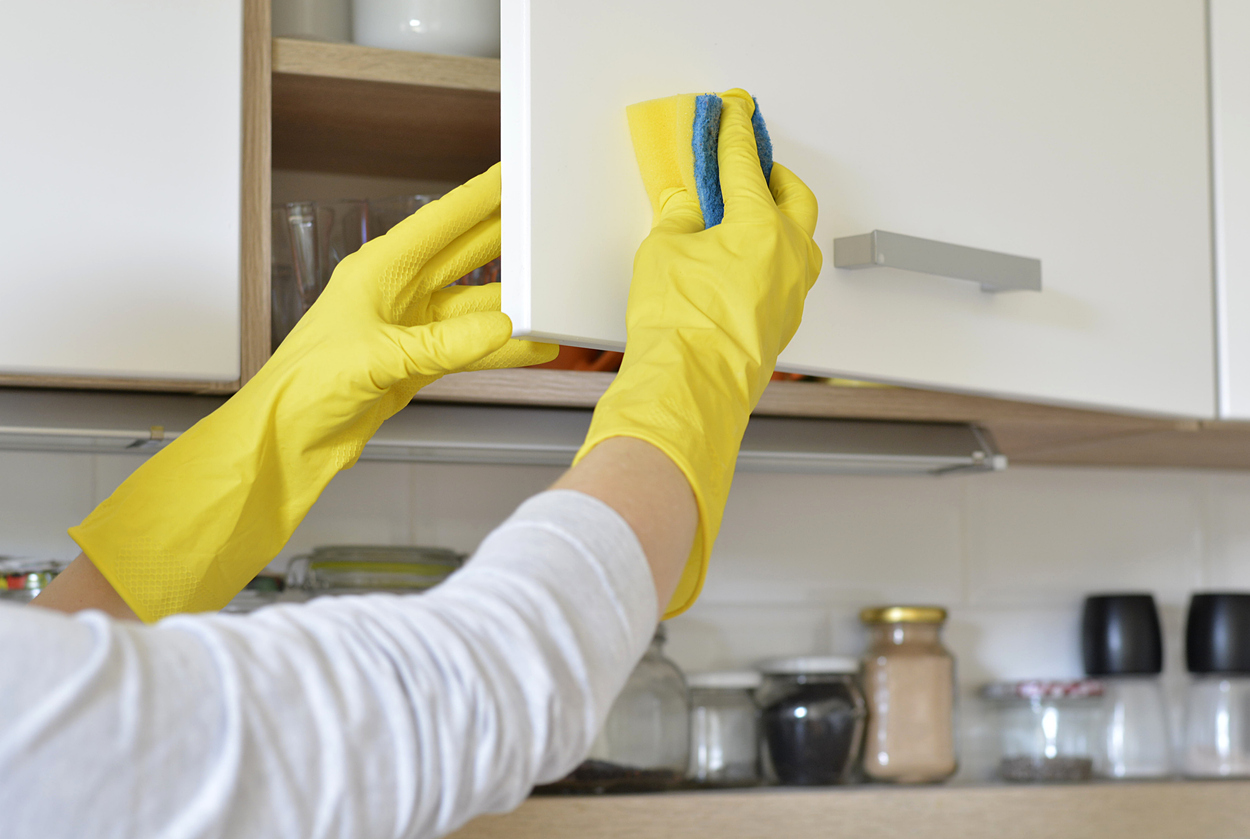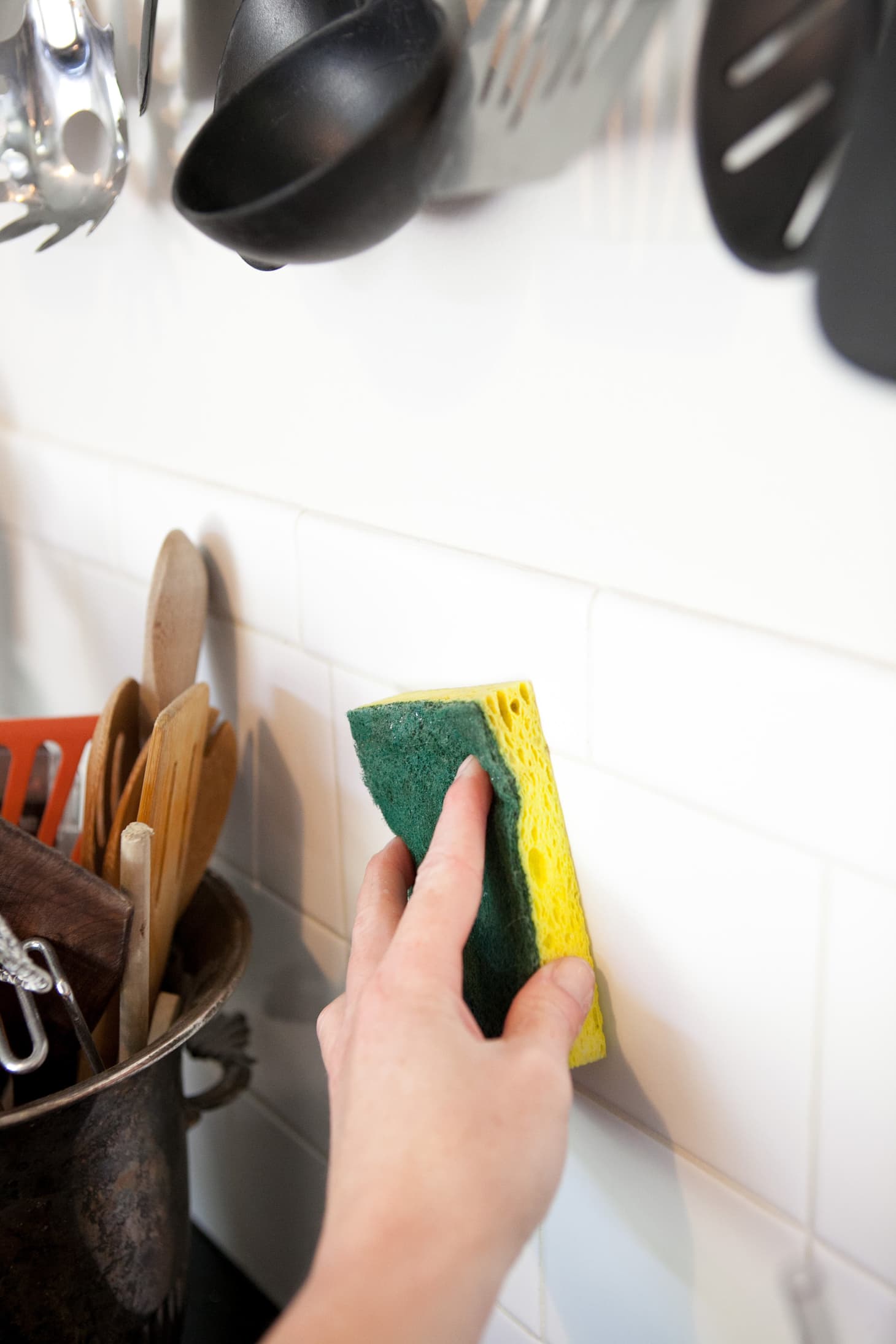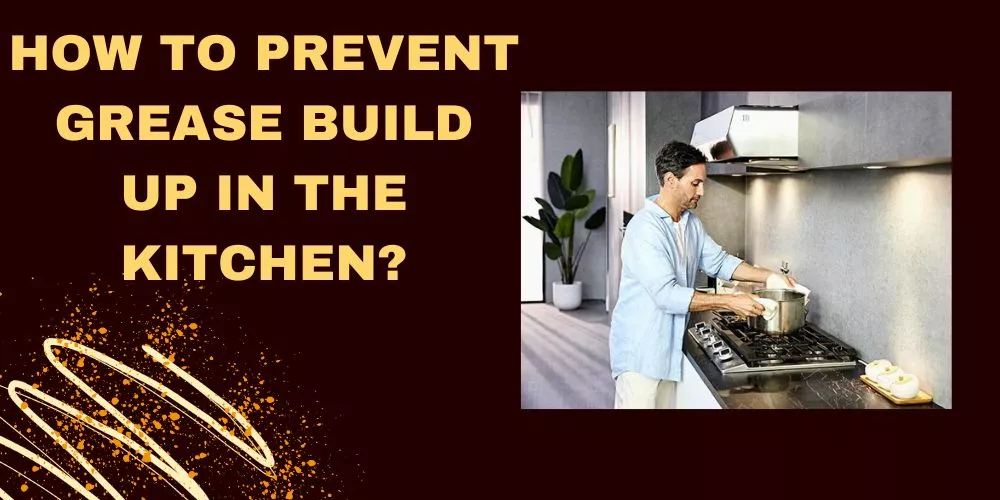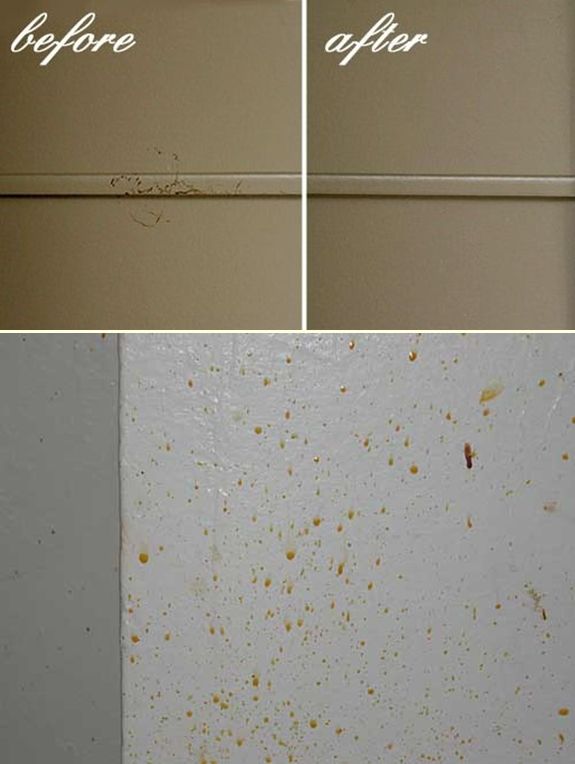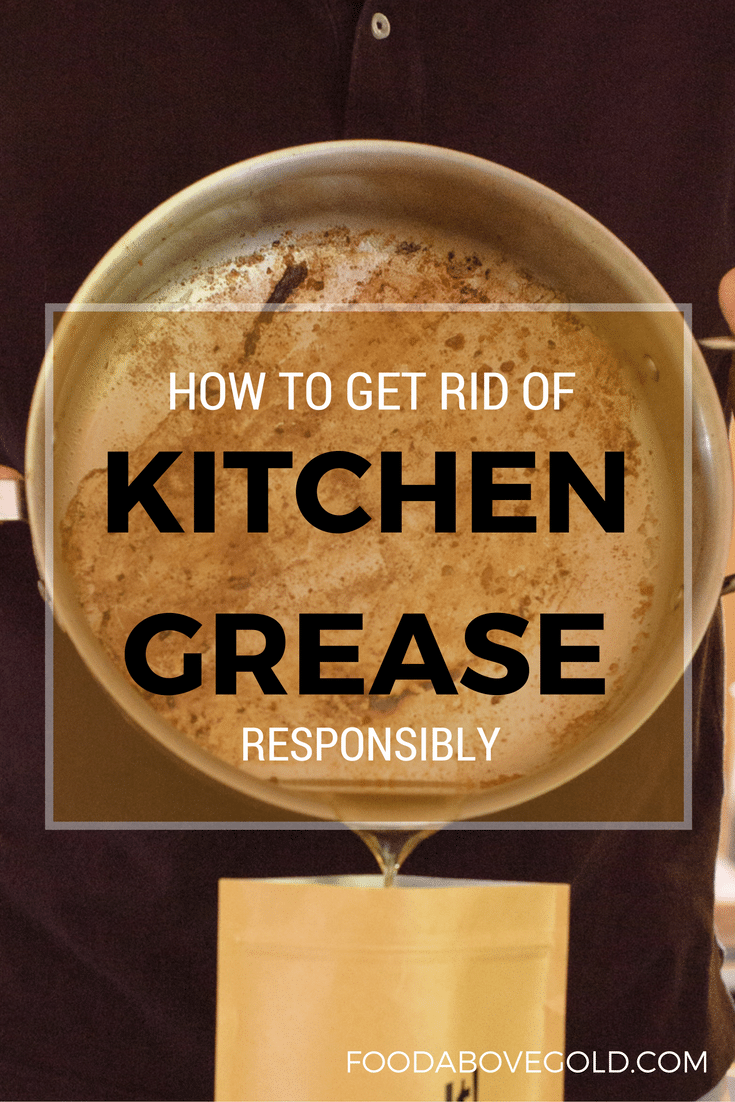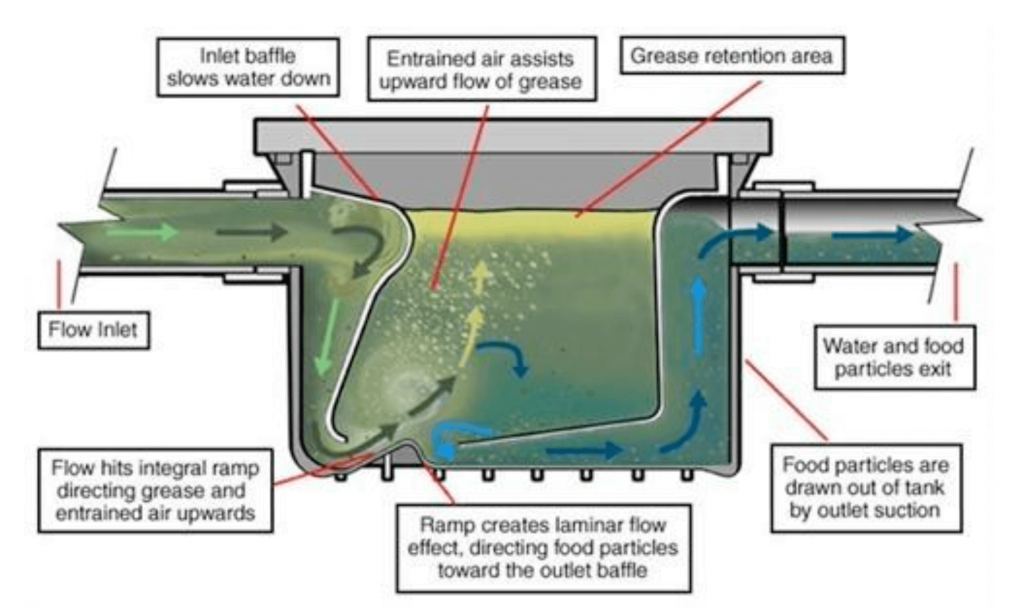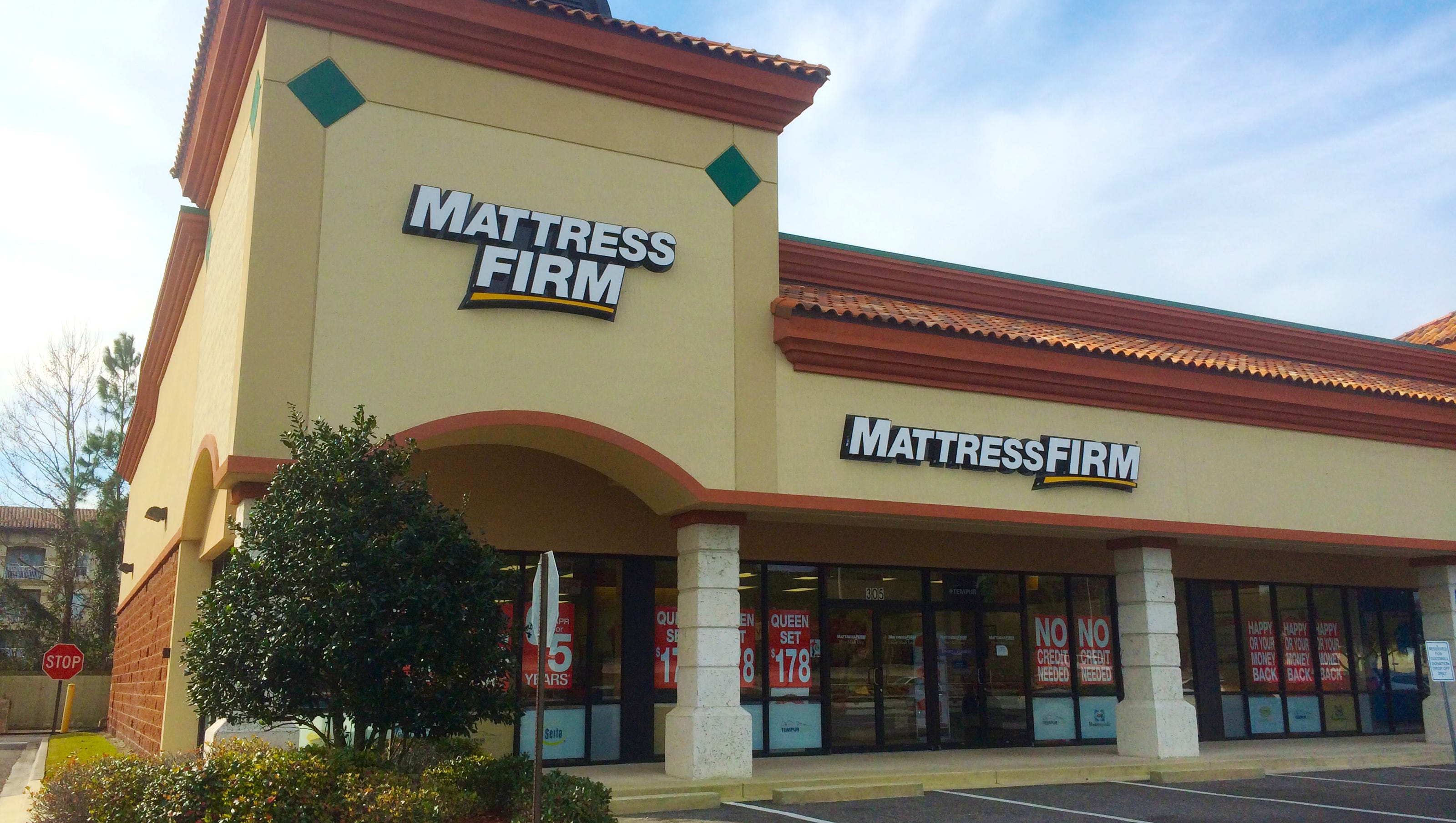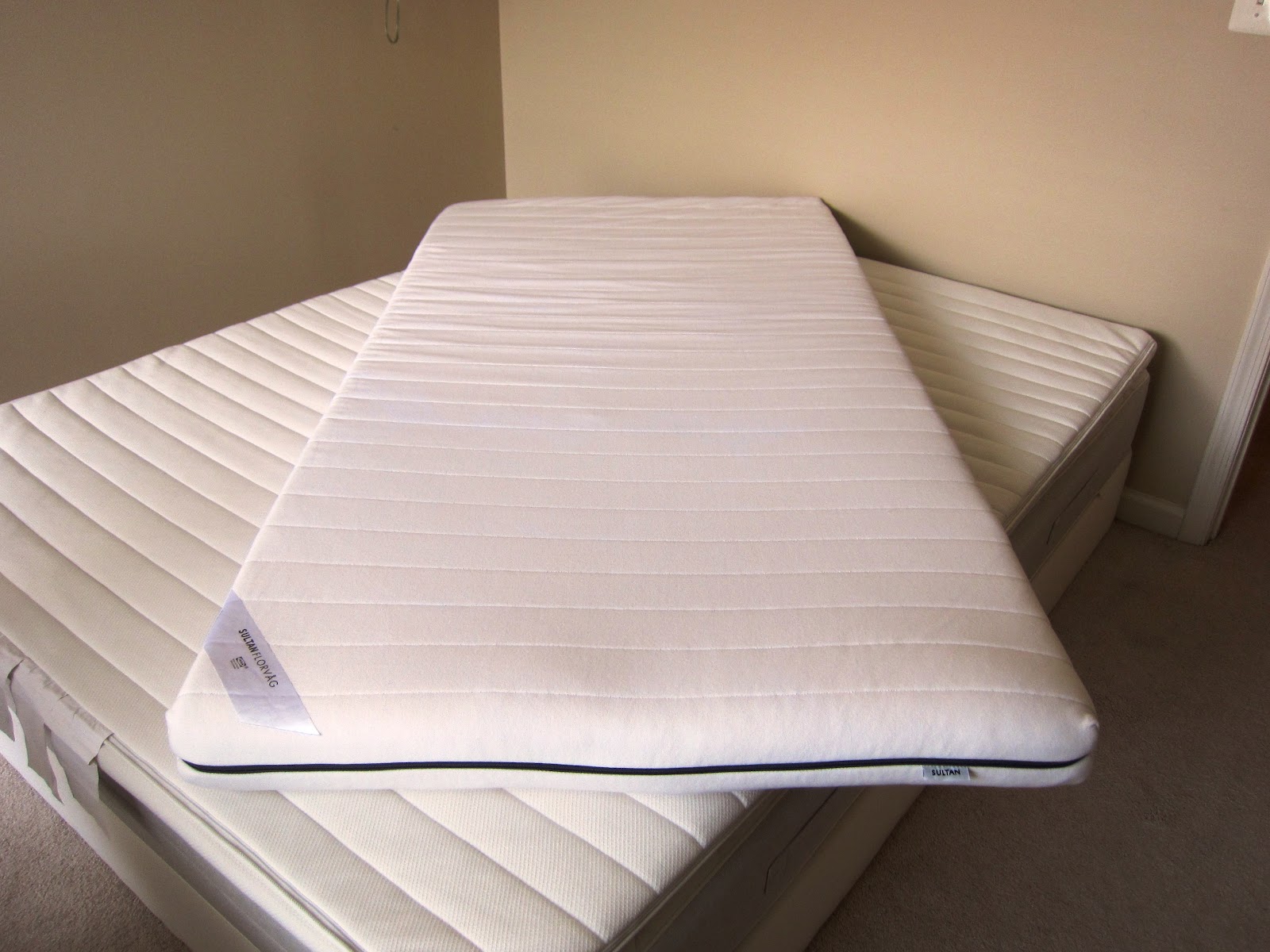Grease buildup on kitchen walls can be unsightly and difficult to remove. Thankfully, there are several methods you can try to effectively remove grease from your kitchen walls. One of the most popular and effective ways is to use a degreaser. Look for a degreaser specifically designed for kitchen walls and follow the instructions on the packaging. You can also try using a mixture of warm water and dish soap to tackle the grease stains. Simply mix a few drops of dish soap with warm water and use a sponge or cloth to scrub the walls. Rinse with clean water and dry with a clean cloth. This method may require a bit more elbow grease, but it is a natural and affordable option. Another effective method is to use baking soda. Mix equal parts of baking soda and water to create a paste and apply it to the grease stains. Let it sit for a few minutes before scrubbing with a sponge or cloth. Rinse with warm water and dry with a clean cloth. Baking soda is a great natural cleaner that can help remove tough grease stains.1. How to Remove Grease from Kitchen Walls
If the above methods don't work, there are a few other options you can try. One of them is using white vinegar. Mix equal parts of white vinegar and warm water and use a sponge or cloth to wipe down the walls. Vinegar is a natural degreaser and can help remove stubborn grease stains. You can also try using rubbing alcohol. Dip a cotton ball in rubbing alcohol and gently rub the grease stains. This method may work better for smaller areas of grease buildup. Be sure to test a small, inconspicuous area first to ensure the alcohol does not damage your walls. If all else fails, you can try using a steam cleaner to remove grease from your kitchen walls. A steam cleaner uses high-temperature steam to break down and remove grease. However, this method may require more time and effort, as well as the use of additional cleaning products.2. Best Ways to Get Rid of Grease on Kitchen Walls
If you prefer to make your own cleaners at home, there are a few simple DIY options for removing grease from kitchen walls. One popular method is to mix equal parts of white vinegar and water in a spray bottle and use it as a natural degreaser. You can also add a few drops of your favorite essential oil for a pleasant scent. Another DIY option is to mix equal parts of baking soda and dish soap to create a paste, similar to the method mentioned previously. This combination can help cut through tough grease stains and leave your walls clean and shiny. Lastly, you can create a mixture of lemon juice and hot water to remove grease from your kitchen walls. Lemon juice is a natural degreaser and can also help deodorize your walls. Simply mix a few tablespoons of lemon juice with hot water and use a sponge or cloth to wipe down the walls.3. DIY Grease Removers for Kitchen Walls
When it comes to removing grease stains from kitchen walls, timing is key. The longer you wait to address the grease buildup, the harder it will be to remove. As soon as you notice grease on your walls, try to remove it as soon as possible. If the grease has already hardened, you may need to use a scraper or putty knife to gently scrape off the excess before using any cleaning products. Be careful not to scratch or damage your walls in the process. Additionally, using hot or warm water can also help loosen and remove grease stains more easily. Always be sure to rinse with clean water and dry with a clean cloth after using any cleaning products.4. Effective Methods for Removing Grease Stains from Kitchen Walls
As mentioned earlier, there are several natural solutions you can use to remove grease from kitchen walls. In addition to white vinegar, lemon juice, and baking soda, you can also use salt and cornstarch. These common household items can help absorb and lift grease stains from your walls. To use salt, simply sprinkle it over the grease stains and let it sit for a few minutes before wiping down with a damp cloth. For cornstarch, mix it with water to create a paste and apply it to the grease stains. Let it sit for a few minutes before wiping away with a damp cloth. These natural solutions are not only effective in removing grease, but they are also safe and affordable alternatives to harsh chemical cleaners.5. Natural Solutions for Grease Removal on Kitchen Walls
If you are dealing with stubborn grease stains that just won't budge, there are a few tips you can follow to help make the process easier. First, make sure to use hot or warm water when cleaning. This will help soften and loosen the grease, making it easier to remove. Secondly, try using a scrub brush or toothbrush to really work the cleaning solution into the grease stains. This can help break down the grease and lift it from the walls. Just be sure to use a gentle touch to avoid damaging your walls. Lastly, for particularly tough grease stains, you can try using a paste of baking soda and water and letting it sit on the stains for a longer period of time. This will give the baking soda a chance to really work its magic and break down the grease.6. Tips for Removing Stubborn Grease from Kitchen Walls
If you prefer to use commercial products to remove grease from your kitchen walls, there are plenty of options available. Look for degreasers specifically designed for kitchen walls and follow the instructions on the packaging carefully. You can also opt for all-purpose cleaners or multi-surface cleaners, which can also be effective in removing grease stains. Just be sure to test a small area first to ensure the product does not damage your walls. When using commercial products, always be sure to follow the safety precautions and use them in a well-ventilated area.7. Commercial Products for Grease Removal on Kitchen Walls
Prevention is key when it comes to keeping your kitchen walls free of grease buildup. One of the best ways to prevent grease from accumulating on your walls is to regularly clean your stove and range hood. These are the main sources of grease in the kitchen and keeping them clean can help prevent it from splattering onto your walls. You can also use splatter guards while cooking to minimize the amount of grease that ends up on your walls. Additionally, make sure to wipe down your walls regularly to remove any grease or cooking splatters before they have a chance to harden and become more difficult to remove.8. How to Prevent Grease Buildup on Kitchen Walls
When it comes to removing grease from your kitchen walls, there are a few common mistakes to avoid. One of them is using too much water. While water can help loosen and remove grease, too much of it can cause the grease to spread and make the stains worse. Another mistake is using abrasive cleaning tools, such as steel wool or harsh scouring pads. These can scratch and damage your walls, making them more difficult to clean in the long run. Instead, opt for soft sponges or cloths to avoid causing any damage. Lastly, avoid using harsh chemicals or cleaners that are not specifically designed for kitchen walls. These products can be too harsh and may damage your walls or cause discoloration.9. Common Mistakes to Avoid When Removing Grease from Kitchen Walls
If you are dealing with heavy grease buildup on your kitchen walls and are unable to remove it yourself, you may want to consider hiring a professional cleaning service. Professional cleaners have the knowledge, experience, and equipment to effectively remove tough grease stains from your walls. They can also provide deep cleaning services for your entire kitchen, including your stove and range hood, to prevent future grease buildup. While this may be a more costly option, it can save you time and effort in the long run and ensure your kitchen walls are kept clean and free of grease. In conclusion, removing grease from kitchen walls may seem like a daunting task, but with the right methods and tools, it can be easily tackled. Whether you prefer natural solutions or commercial products, make sure to follow the tips and techniques mentioned above to effectively remove grease and keep your kitchen walls looking clean and shiny.10. Professional Services for Grease Removal on Kitchen Walls
Introduction to Kitchen Wall Design
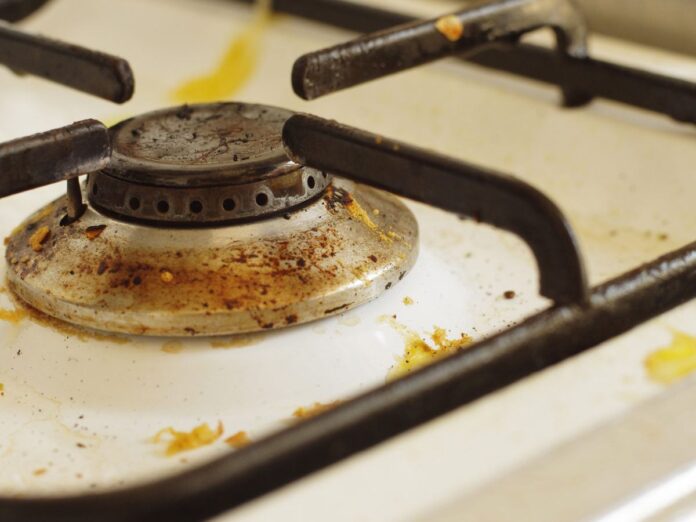
Creating a functional and aesthetically pleasing kitchen can be a challenging task for any homeowner. One of the key components of a well-designed kitchen is the walls. Not only do they provide a backdrop for your cabinets and appliances, but they also serve as a focal point for the entire space.

However, one common problem that many homeowners face is dealing with grease buildup on their kitchen walls. This not only makes the walls look dirty and unattractive, but it can also be a health hazard. Grease buildup on walls can attract bacteria and germs, making it a potential breeding ground for harmful pathogens.
Removing grease from kitchen walls can seem like a daunting task, but with the right techniques and products, it can be easily managed. Not only will you have a clean and hygienic kitchen, but you'll also have a beautiful and well-maintained space to cook and entertain in.
Understanding the Causes of Grease Buildup
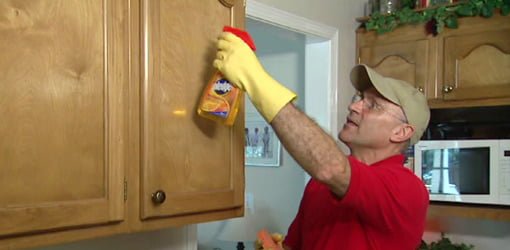
Before diving into the process of removing grease, it's important to understand what causes it in the first place. When cooking, oils and fats can splatter onto the walls, leaving behind a sticky residue that can be difficult to remove. This can also happen when using high heat or frying foods.
In addition, poor ventilation in the kitchen can also contribute to grease buildup on walls. The steam and smoke from cooking can settle on the walls and mix with the oils and fats, creating a sticky and greasy mess.
Effective Methods for Removing Grease from Kitchen Walls

There are several methods that can effectively remove grease from kitchen walls, depending on the severity of the buildup and the type of wall surface. For painted walls, a simple mixture of hot water and dish soap can do the trick. Use a sponge or cloth to gently scrub the walls and then rinse with clean water.
For tougher grease stains, a stronger solution may be needed. Mix equal parts vinegar and water and use it to scrub the walls. The acidity of the vinegar helps to break down the grease, making it easier to wipe away.
For tougher stains or textured walls, a degreaser or all-purpose cleaner may be necessary. Be sure to follow the instructions on the product and test it on a small, inconspicuous area first to avoid damaging the wall.
Maintaining a Clean and Grease-Free Kitchen
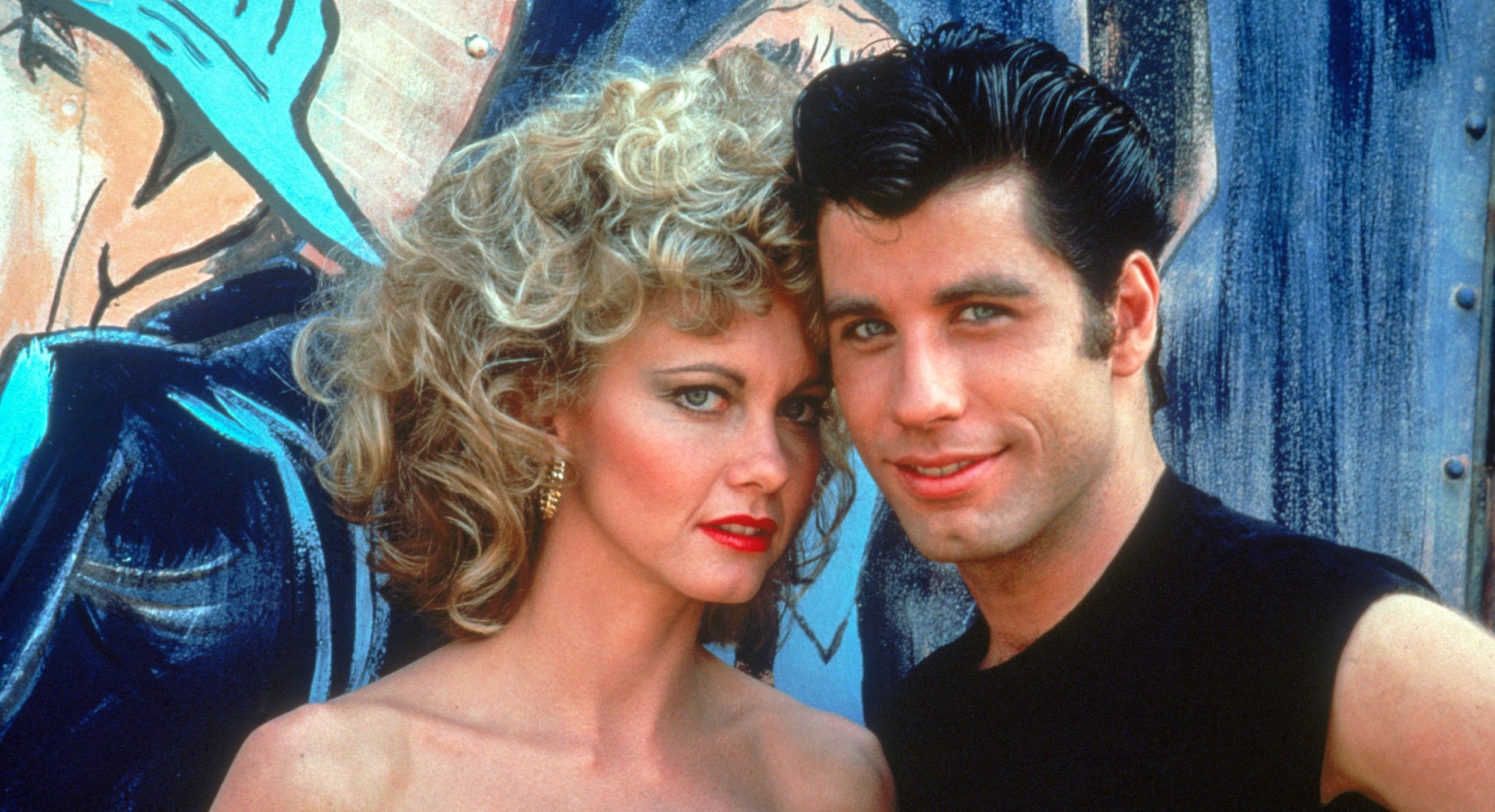
Prevention is key when it comes to dealing with grease buildup on kitchen walls. Using a splatter guard while cooking can help minimize the amount of grease that gets on the walls. Regularly wiping down the walls with a mild cleaner can also help prevent buildup.
In addition, ensuring proper ventilation in the kitchen can go a long way in reducing the amount of grease that settles on the walls. Installing a range hood or using a fan while cooking can help keep the air clear and prevent grease from accumulating.
Conclusion
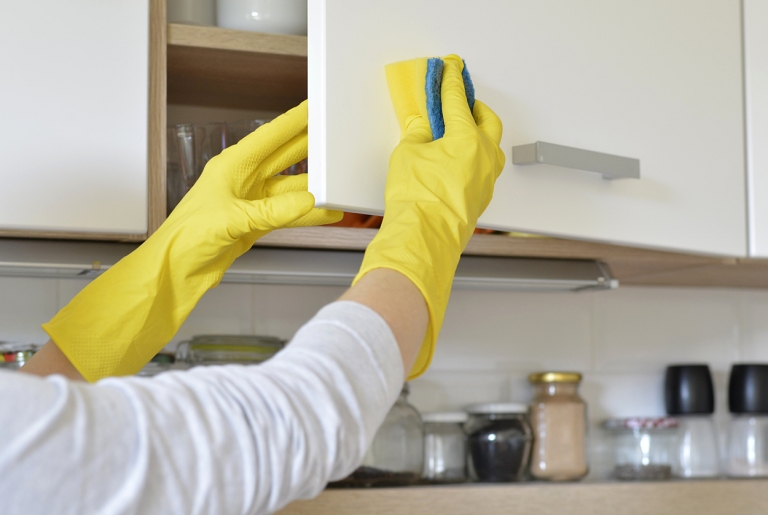
A well-designed kitchen is not only about aesthetics, but also about functionality and cleanliness. Removing grease from kitchen walls is an important aspect of maintaining a clean and hygienic space. By understanding the causes of grease buildup and using effective cleaning methods, you can keep your kitchen walls looking pristine and enjoy a beautiful and functional kitchen for years to come.


